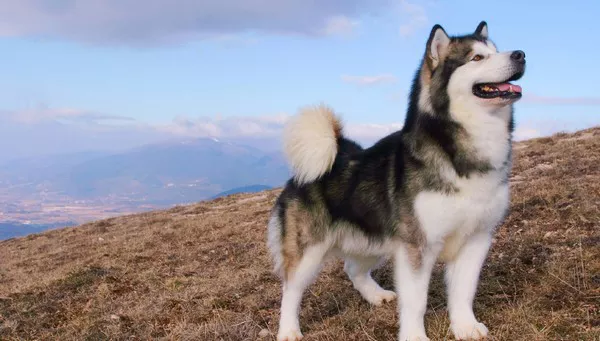Alaskan Klee Kai, renowned for their striking resemblance to huskies in a smaller package, are beloved for their captivating appearance and spirited personality. However, their thick double coat raises questions about their adaptability to warmer climates. In this comprehensive guide, we explore the intricacies of Alaskan Klee Kai thriving in hot weather. From understanding their coat’s role to implementing effective heat management strategies, discover how these charming dogs can coexist comfortably in warmer environments.
Understanding the Alaskan Klee Kai
To comprehend the Alaskan Klee Kai’s ability to thrive in hot weather, it’s essential to delve into their origins and the unique composition of their coat. Bred to be a smaller version of the Alaskan Husky, the Klee Kai retains many traits of its larger counterpart. The double coat, consisting of a dense undercoat and longer guard hairs, serves as insulation against cold temperatures. While this coat is highly effective in cold climates, it poses challenges in warmer settings. The key lies in understanding the coat’s purpose and implementing measures to mitigate potential heat-related issues.
Heat Sensitivity in Alaskan Klee Kai
Alaskan Klee Kai, with their thick coat designed for frigid conditions, can be more sensitive to heat than breeds with shorter or single-layered coats. They may be prone to overheating, which can lead to discomfort, exhaustion, and even more severe heat-related conditions. Recognizing the signs of heat stress in Alaskan Klee Kai is crucial for proactive intervention. Signs may include excessive panting, lethargy, drooling, and in severe cases, vomiting or collapse. Responsible owners must be attuned to these indicators and take preventive measures to ensure their Klee Kai’s well-being in hot weather.
Alaskan Klee Kai in Hot Weather
While the Alaskan Klee Kai’s thick coat may pose challenges in hot weather, several strategies can be employed to ensure their comfort and well-being. Adequate shade and shelter are paramount, providing a retreat from direct sunlight during the hottest parts of the day. Hydration is equally crucial; ensure your Klee Kai has access to fresh water at all times, especially during outdoor activities. Additionally, adjusting exercise routines to cooler times of the day and incorporating indoor play can help manage the impact of hot weather on your Alaskan Klee Kai.
Grooming Practices
Grooming plays a pivotal role in managing the Alaskan Klee Kai’s coat for optimal comfort in hot weather. Regular brushing helps remove loose fur and facilitates air circulation, preventing the undercoat from becoming too dense. While it may be tempting to shave the coat for relief in hot weather, this practice is generally discouraged. The double coat serves as insulation, protecting the Klee Kai from both cold and hot temperatures. Shaving can compromise this insulation, potentially leading to skin issues and an increased sensitivity to the sun. Embracing a consistent grooming routine that respects the coat’s natural properties is key to a happy and healthy Alaskan Klee Kai.
Cooling Strategies
Implementing cooling strategies is essential for Alaskan Klee Kai to beat the heat and enjoy their surroundings. Consider providing cooling mats or towels for your Klee Kai to lie on, creating a refreshing surface. Frozen treats, such as ice cubes with a hint of flavor, can be a delightful and cooling snack. Moreover, exploring water-based activities, like supervised swimming, can offer both physical exercise and relief from the heat. By incorporating these cooling strategies into your Alaskan Klee Kai’s routine, you can enhance their overall well-being in hot weather.
Acclimatization
Acclimatization is a gradual process that allows your Alaskan Klee Kai to adjust to warmer temperatures over time. Begin by exposing them to milder heat for short durations, gradually increasing the time spent outdoors. This gradual approach enables your Klee Kai to adapt to the changing climate, building tolerance and resilience. Pay attention to their behavior and any signs of discomfort during this process, adjusting the pace of acclimatization accordingly. With patience and consistency, your Alaskan Klee Kai can develop a greater tolerance for hot weather.
Hydration Matters
Hydration is a cornerstone of ensuring your Alaskan Klee Kai’s well-being in hot weather. These dogs, like all breeds, require access to fresh water at all times, especially when temperatures rise. Carry water for your Klee Kai during outdoor activities and walks, and make water breaks a regular part of the routine. Dehydration can escalate quickly in hot weather, leading to serious health issues. By prioritizing hydration, you contribute significantly to your Alaskan Klee Kai’s comfort and health in warmer climates.
Monitoring Health
Vigilant monitoring of your Alaskan Klee Kai’s health is crucial, particularly in hot weather. Regular veterinary check-ups can help assess their overall well-being and address any specific concerns related to temperature sensitivity. Be proactive in recognizing signs of heat stress, and take prompt action if you observe any unusual behavior or symptoms. A collaborative approach between you and your veterinarian ensures that your Alaskan Klee Kai receives the necessary care and guidance for thriving in hot weather.
Conclusion
In conclusion, the question of whether Alaskan Klee Kai can thrive in hot weather is met with a nuanced understanding of their unique needs. While their double coat presents challenges, proactive measures, including grooming practices, cooling strategies, acclimatization, and vigilant health monitoring, can enable these charming dogs to coexist comfortably in warmer climates. Responsible ownership involves striking a balance between acknowledging their cold-weather heritage and implementing strategies that ensure their well-being in diverse environmental conditions. With thoughtful care and consideration, your Alaskan Klee Kai can enjoy a happy, healthy, and comfortable life regardless of the temperature outside.


